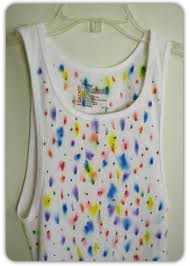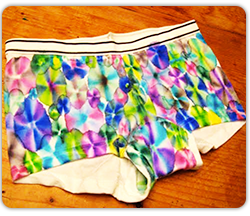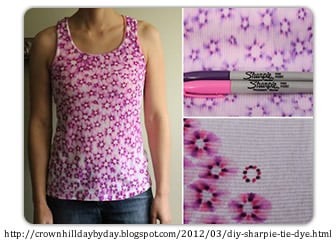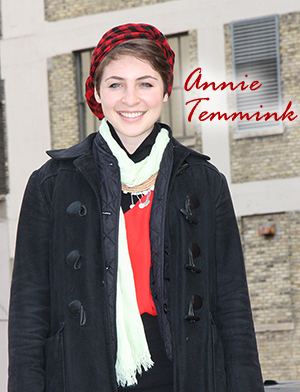What you’ll need:
-White clothing/shoes/hats
-Permanent markers
-Rubbing alcohol
-Dropper or squeeze bottle
-Cups
-Rubber bands
-Cardboard
 First draw a design on your fabric with a marker. You can use one color, all the colors, or do something in between. The rubbing alcohol acts as a solvent for the Sharpie®, causing it to bleed into the fabric (think high school chemistry solvent extraction experiment). With this in mind, you’ll want to create a design that allows the markers to bleed together in an interesting way. Better yet, try a few different ideas, and see what you like best.
First draw a design on your fabric with a marker. You can use one color, all the colors, or do something in between. The rubbing alcohol acts as a solvent for the Sharpie®, causing it to bleed into the fabric (think high school chemistry solvent extraction experiment). With this in mind, you’ll want to create a design that allows the markers to bleed together in an interesting way. Better yet, try a few different ideas, and see what you like best.
 A lot of people use simple circular designs that spread out into rings. You can also play with plant drawings, skulls, scribbles, dots, mandalas, or anything else you can think of (note that black Sharpies® will look purple in the finished product). Don’t forget St. Patrick’s Day is coming up (March 17th)- use different shades of green Sharpies® and for guys, why not get a pair of white pants and make your own green camo? Or draw other wild-green patterns. You’ll certainly bring the luck of the Irish with that. Try it with tank tops, shorts or boxers, too. Lots of different designs look great.
A lot of people use simple circular designs that spread out into rings. You can also play with plant drawings, skulls, scribbles, dots, mandalas, or anything else you can think of (note that black Sharpies® will look purple in the finished product). Don’t forget St. Patrick’s Day is coming up (March 17th)- use different shades of green Sharpies® and for guys, why not get a pair of white pants and make your own green camo? Or draw other wild-green patterns. You’ll certainly bring the luck of the Irish with that. Try it with tank tops, shorts or boxers, too. Lots of different designs look great.
 Once you’ve drawn your designs place the fabric on top of a cup, with the design in the center, and secure using a rubber band (this step allows the Sharpie® to bleed more evenly because the fabric will be taut.)
Once you’ve drawn your designs place the fabric on top of a cup, with the design in the center, and secure using a rubber band (this step allows the Sharpie® to bleed more evenly because the fabric will be taut.)
Instead of using cups and rubber bands, you can also put a piece of cardboard in between the layers of your garment. This is much easier if you want all over color.

 Next, use a dropper or squeeze bottle to transfer the rubbing alcohol to the fabric. For circular designs, it works best to begin dropping rubbing alcohol in the center of the design (about 5-10 drops, or as many as you need to get the bleed width you want for your finished design).
Next, use a dropper or squeeze bottle to transfer the rubbing alcohol to the fabric. For circular designs, it works best to begin dropping rubbing alcohol in the center of the design (about 5-10 drops, or as many as you need to get the bleed width you want for your finished design).
Let dry.
Once your shirts are completely dry its a good idea to throw them into the dryer (or run an iron over them) to help set the ink before washing. Note that Sharpie® ink is alcohol based (allowing it to react in such a neat way with the rubbing alcohol) but because of this, it is not archival and it will fade when you wash it. The Sharpie® manufacturers recommend that you hand wash Sharpie® dyed clothing for best results, but over time (some more quickly than others) your designs will fade. Also, fabric ink Sharpies are not alcohol based, and thus will not react with the rubbing alcohol in the same manner. But you can always try new designs if yours start to fade. This is still a fun summer project!
Goodwill’s got great raw material for you to play with and you’ve got the ink, so revamp some clothes and see what you think!
(Sorry, couldn’t resist the rhyme.)







